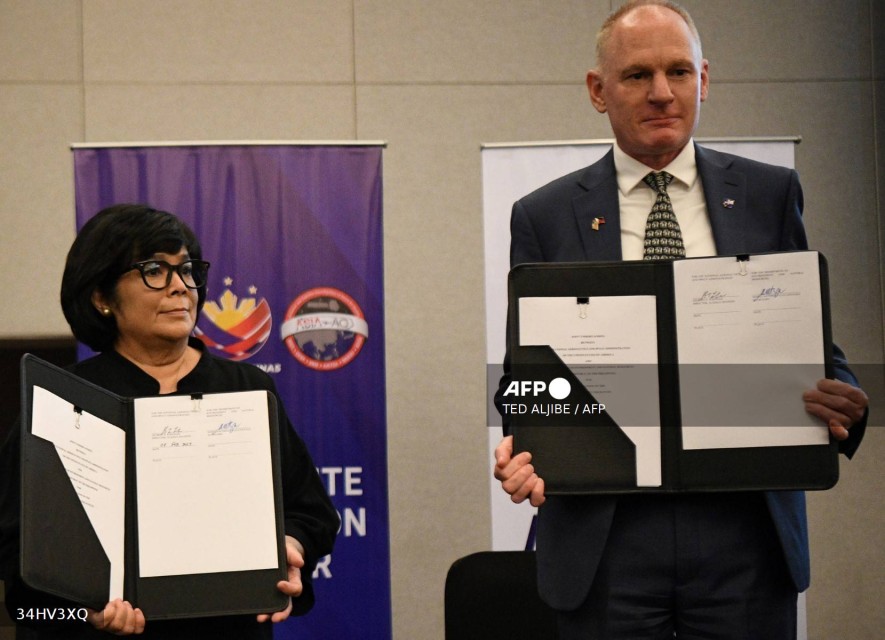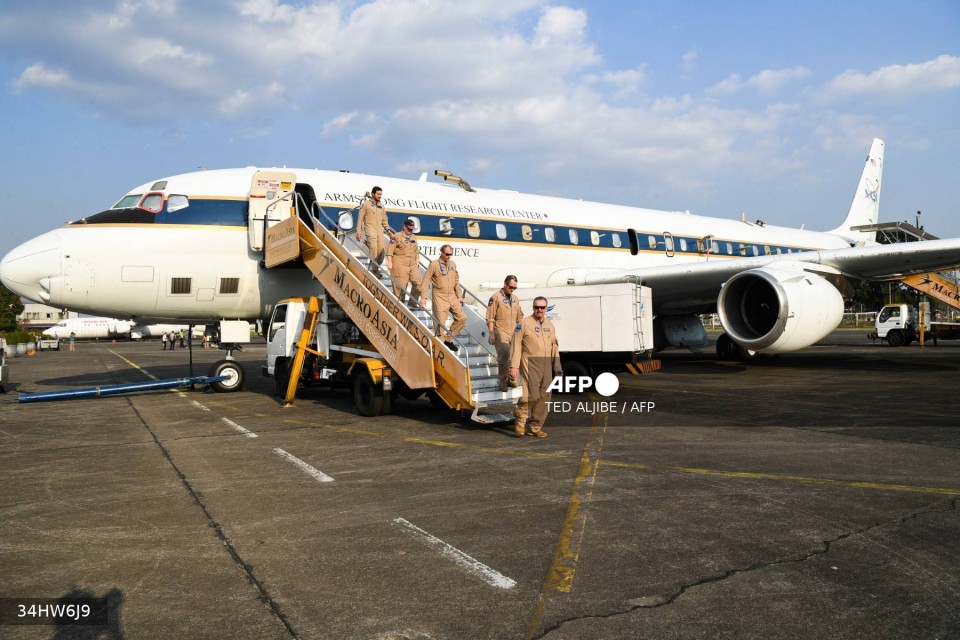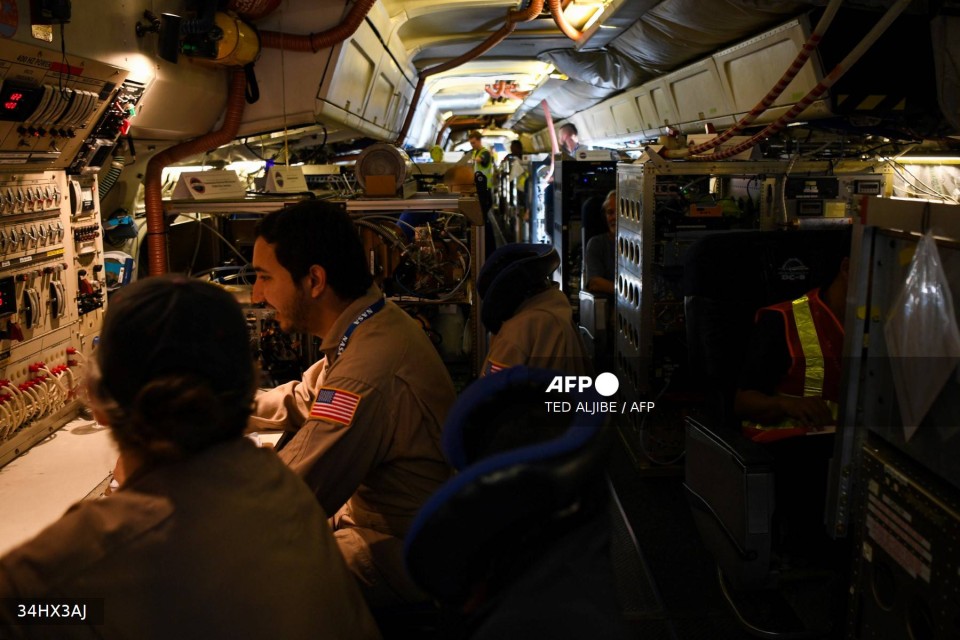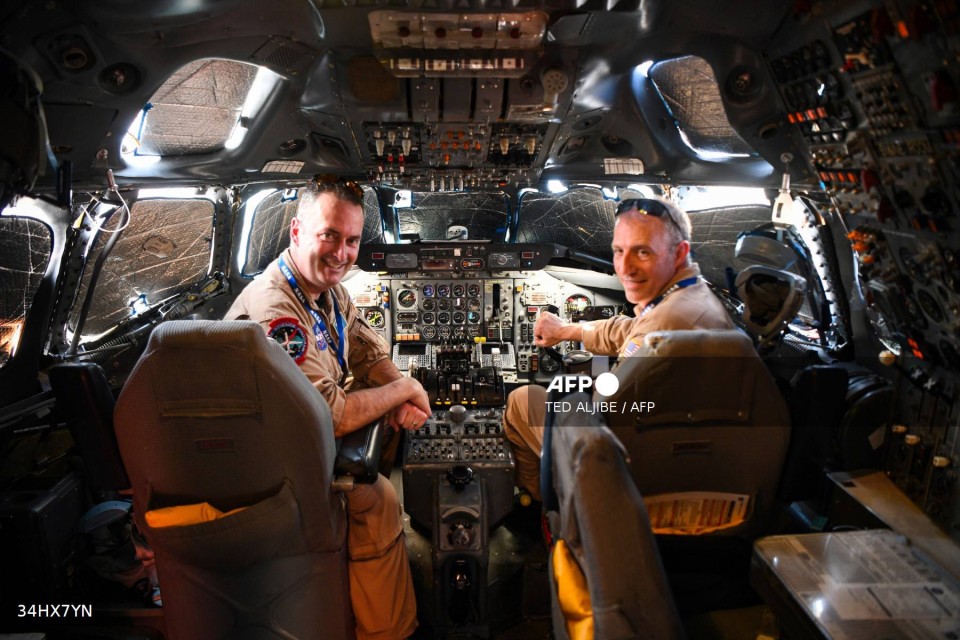

CLARK, Philippines, Feb 9, 2024 (AFP) – NASA has kicked off a series of marathon flights in Asia with the world’s biggest flying laboratory, in an ambitious mission to improve the models that help to forecast and fight air pollution.
Millions of deaths each year are linked to air pollution, and improving the ability to identify its sources and behaviour can lead to more accurate warning systems for the public.
Starting this week in the Philippines, the US agency’s DC-8 is flying for up to eight hours at a time — sometimes just 15 metres (50 feet) from the ground — to swoop up air particles for study.
“We can provide direct measurements of how much pollution is coming from different sources. And that’s one of the primary inputs to the air quality forecasting models,” NASA’s Barry Lefer told reporters Thursday at Clark International Airport, around 80 km (50 miles) north of Manila.
Air quality forecasting relies on readings from ground stations as well as satellites, but both methods are limited in their ability to see how pollutants are spread in the air, according to experts.
Readings from aircraft can help fill that gap, improve the interpretation of satellite data, and lead to more accurate models.
Combining the air, space and ground readings is necessary for policies “regarding public health, regarding industrial compliance, regarding… ecosystem preservation and conservation”, said Maria Antonia Loyzaga, secretary of the Philippines Department of Environment and Natural Resources.


Packed with dozens of highly sensitive instruments, the NASA lab has flown twice so far this week in a figure-eight pattern over some of the most densely populated areas of the Philippines, including the capital region, according to the tracking site FlightAware.
It has been accompanied by a smaller NASA Gulfstream jet whose instruments can create three-dimensional maps of pollutants in the air.
In the coming weeks, the jets will also conduct research flights over South Korea, Malaysia and Thailand.
Results from the study will be shared with the public after a year, NASA programme officials said.
The project, named ASIA-AQ, is a collaboration between the US agency and governments in a region with some of the highest air pollution-linked death rates in the world.
Manila Observatory scientist Maria Cambaliza told reporters Thursday that about a third of global air pollution-linked deaths are recorded in Asia.
In the Philippines, she added, there are 100 such deaths per 100,000 people.






